Note: Since the time this article was written, Kemono Friends has been affected by the banlist. Alpaca Suri and the 2/1 Heal Event may not be played at the same time. The article has been left as it was at that time.
Kemono Friends came out of nowhere in 2017 and took the anime fandom by storm. The show took what appeared to be a generic slice of life show about animal girls, and transformed it into an apocalyptic mystery. Before the set launched, most players had no idea how a quirky show like Kemono Friends would play as a set. Turns out, pretty quirky: it had a focus on events and defense, which is quite different than the very offensive sets that came out around the same time. Unlike the series that threw away everything that made it successful, see the second season’s ratings on Japanese social media, the set remains viable today by sticking to its core concepts.
Unifying Concepts: Event Spam and Defense
If you are playing any Kemono Friends deck, you are going to be playing event cards. A lot of them. What sets Kemono Friends apart from other sets is the use of powerful events. Every colour has two events and most of these events are very usable and at a good cost. For example, green’s All Together Pull allows you to heal a character to hand for one stock at level two, while yellow’s Paper Airplane is a counter that taps an opponent for three stock. Most of the events can be retrieved from the waiting room by character effects, making them easier to deploy. What really enables the heavy event use is the fact that an early playable level 3, Kaban, Full of Ideas, can search any event when she is played from hand. The events now become incredibly easy to use.
Kemono Friends is also very good at avoiding soul damage. It does it in two ways: blocking your opponent’s ability to burn one damage, and by compressing stupidly well. Kemono compresses by sending things to memory and generating a stupid amount of stock. Many cards go to memory in some way. The most prominent is Kaban at the Congratulation Party. When Kaban is reversed you may; pay one stock; take one damage; search for a Friends character; and if you are level two or lower, send Kaban to memory. From memory, Kaban blocks your opponent activate abilities that deal one damage to you. Not only do you defend against burn damage, you take cards out of deck making it easier to cancel.
Kemono sends cards to stock from your waiting room with ease. The most effective manner is with Alpaca Suri, Café Waitress. You may tap her to send a Friends character from your waiting room to your stock. If you have two in your back row, you can create up to five stock every turn! Imagine all the healing and cancelling you can do! These overarching theme suggest a path to victory.
How does Kemono Friends Win?
You grind, hard.
By assembling the pieces mentioned above, you generate sufficient stock to ABH. Always Be Healing. Kemono has access to lots of healing at level two and three. At level two, it has the heal event as well as a red early play level 3. At level three, you have healers in the other three colours. ABH is stock intensive, you need your Alpacas out quickly. Switch Trigger climaxes allow you to play your Alpacas at level one instead of level two, helping you build a mountain of stock early.
You can be a further pain in the rear for opponents that rely on reversing your characters for effects. Commerson’s Dolphin has a resonate ability, having another copy of the dolphin in hand, that allows it to return to hand. You can evade clock kickers with this, or by deploying the Campfire back up event that returns a character to hand. Hard for your opponent to do things if you are constantly healing and disrupting them.
Short Comings
Despite being able to amass stock and disrupt the opponent, Kemono Friends decks tend to be quite weak on the opponent’s turn. Constantly getting run over makes it hard for Kemono decks to maintain hand as they often have to replace their field. This leaves Kemono players vulnerable to clock and memory kicking. Kemono also has little in the way of cards that add cards to hand, further compounding the issue. This can be somewhat mitigated by using door triggers, at the cost of your finishers.
By the power of ABH, Kemono rose above its shortcomings. ABH won the national championships in Japan in 2017. Sadly, it failed to win the overall title, finishing second.
Some of Kemono’s defensive ability has been directly eroded in the last year. Heavy burners like Bang Dream’s Yukina, who burns two twice, avoid Kaban altogether. Meanwhile more level three combos decompress you by milling your deck and doing damage for each climax hit like Summer Pockets, or throwing out climaxes like Hina Logic. This has removed Kemono from the forefront of decks, but it still occupies a niche defensive spot in the competitive game. Specifically, the deck is able to sift through itself easily due to its compression and heal well due to its stock. Thus it is one of scant few decks that still grind despite your opponent’s pressure.
Conclusion
Kemono Friends is a set that knows what it wants to do, and has all of the tools to execute its plans. It gives you the means and the stock to compress, heal, and prevent damage at many points throughout the game. A shifting metagame has reduced the overall effectiveness of the set, Kemono Decks still have a place in the format. Unlike the meteoric rise and fall of Kemono Friends as a franchise in 2017, Kemono Friends will be grinding away in Weiss for a while to come.
The next section of this retrospective will detail specific cards within the set, be sure to check it out!
Photo credits: Little Akiba

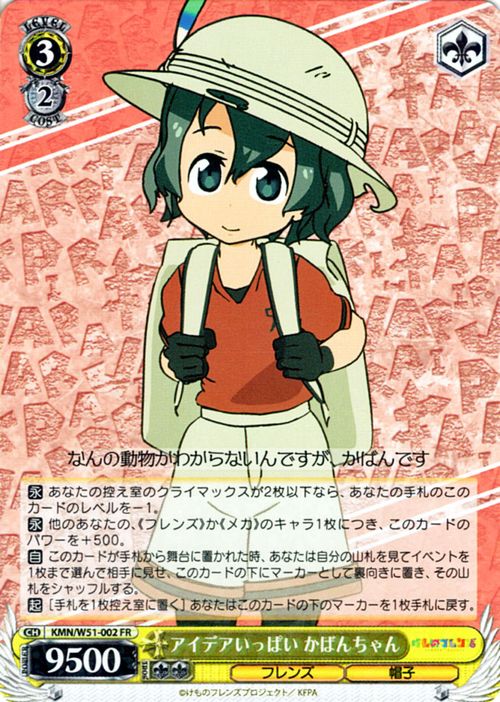
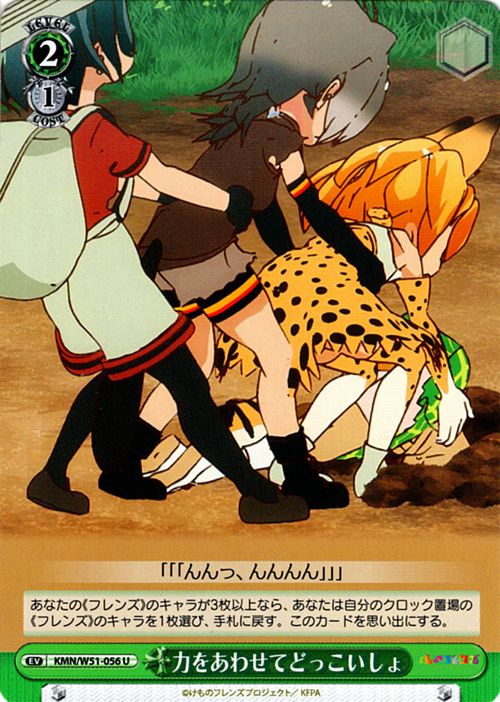
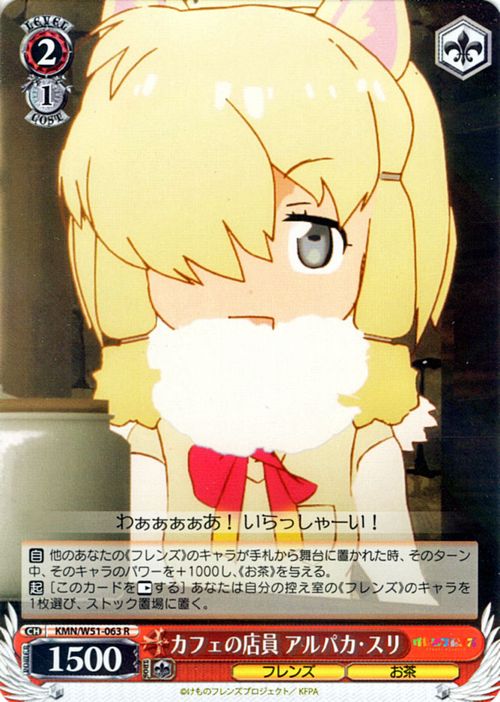
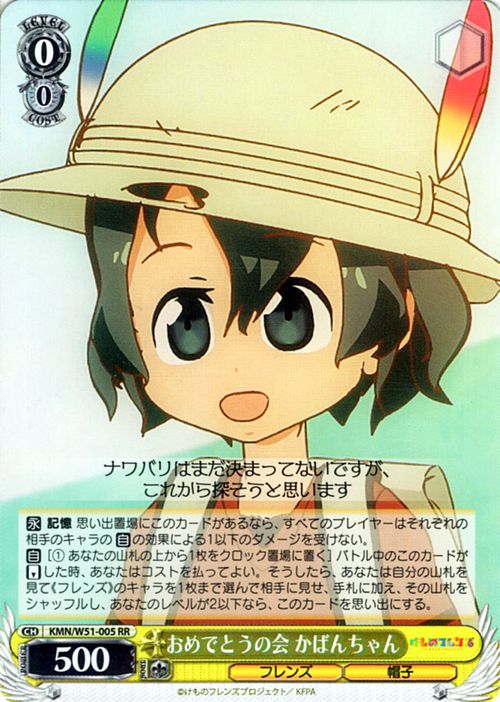
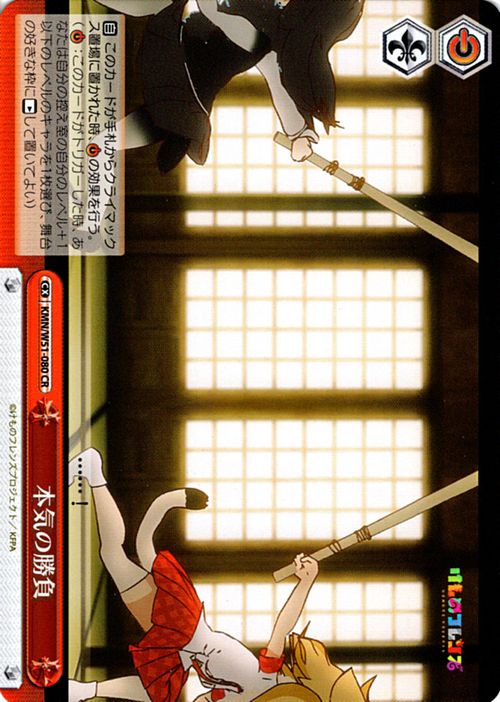

3 thoughts on “Welcome back to Japari Park! A Weiss Schwarz Kemono Friends Retrospective”